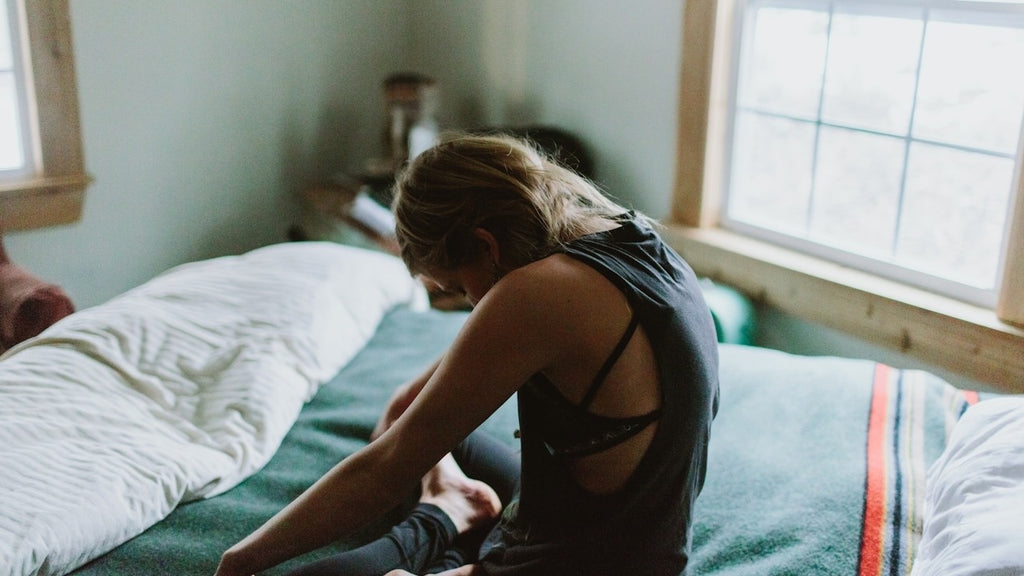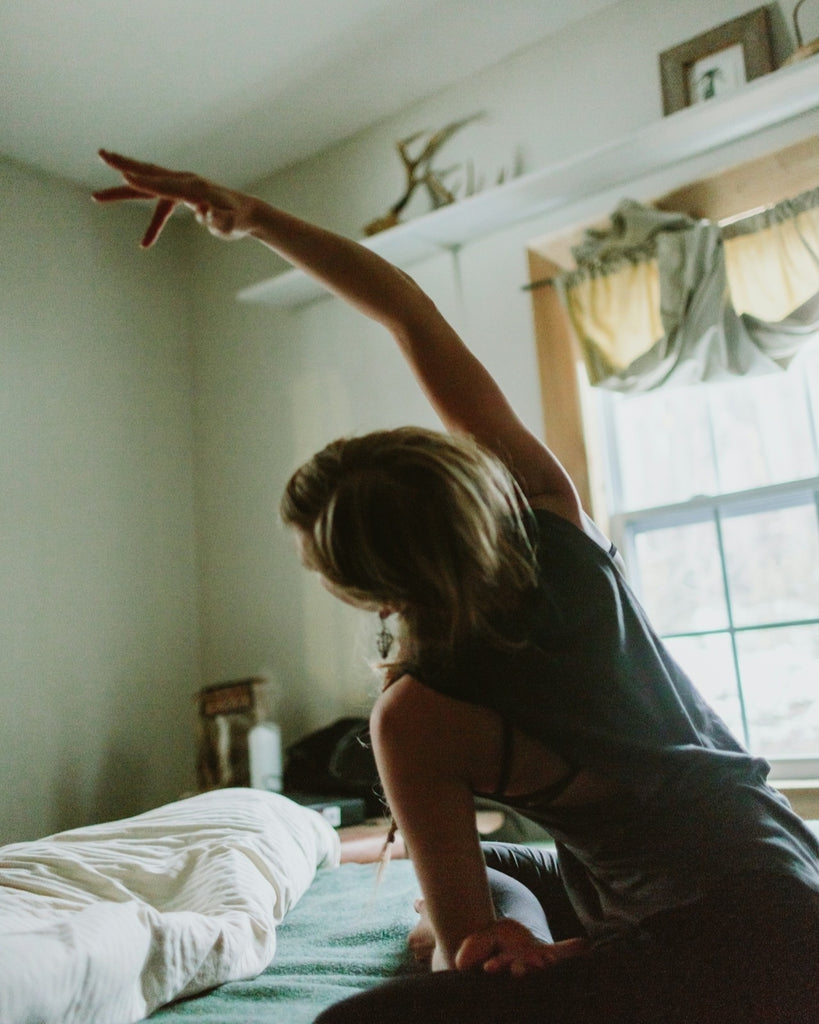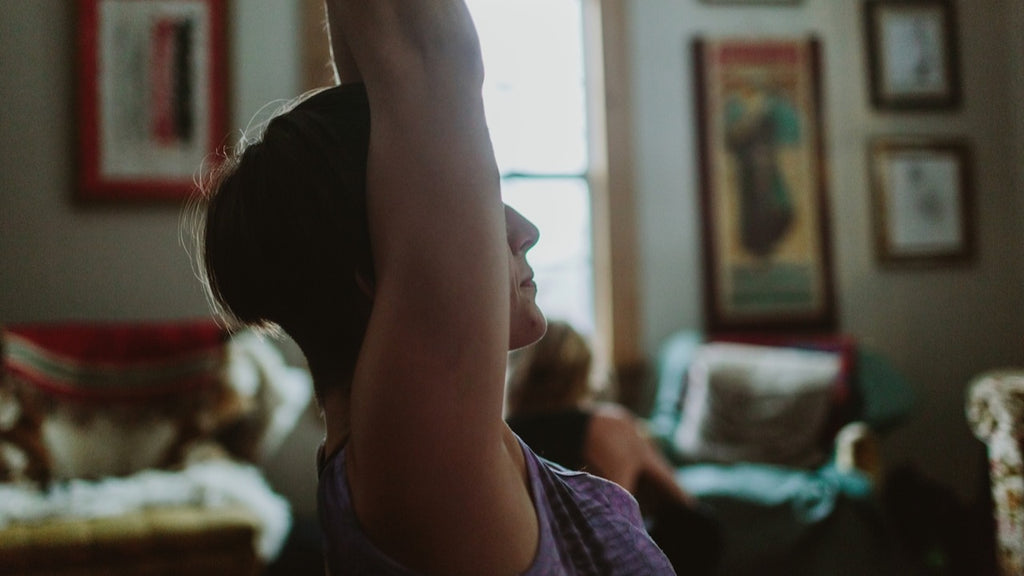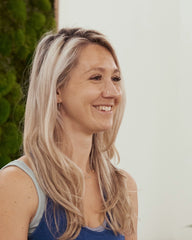When we’re looking at building a natural toolkit for wellbeing - recipes, activities, products or practices that can help people feel more comfortable and more themselves - yoga is an obvious candidate for inclusion!
But does that mean you have to shell out for the expensive leggings and attain nirvana on a sunset beach?!
Guest blogger, Lucy Moffat, explains how yoga can empower people to live a more fulfilled, comfortable life - but reassures us that practising yoga doesn’t mean you have to live up to impossible stereotypes of perfection, or be able to wrap your feet behind your head! It’s all about connection - practical, effective strategies for feeling better in your mind and body...
The internet is full of research telling us about the wide-ranging, life-changing benefits of yoga, breath-work and meditation. I’m sure you’ve also noticed all the social media yoga posts of perfectly edited poses on a beach and cringey influencer articles telling us how to be the perfect yogi. But I don’t believe that’s the reason why we keep stepping back onto the mat time and time again, year after year.
It’s certainly not the reason why my practice has journeyed through life with me for over a decade!

The truth is, there’s no better advertisement or evidence for yoga than the way you feel when you sink deep into savasana at the end of a juicy practice. The ultimate evidence of yoga’s magic is melting deep into a shoulder-opening puppy pose after you’ve been carrying the weight of the world on your tight shoulders or when the thick fog clears in your head after a round of alternate nostril breathing. The proof is in the pudding, and that pudding has been serving humankind well for around five thousand years!
So what is it that has kept us coming back to this ancient practice? Maybe when you first started yoga you were lured in by the thought of having sublimely toned abs, standing on your head for hours or feeling like an elegant, flexible gazelle… Those things might be shiny and exciting at first, but we all know they soon fizzle out. They certainly don’t keep you coming back to practice in the depths of a dark winter, when you have had a difficult week and when you feel burnt out to the point of no return. So what does?

At the heart of all yoga is connection. Yoga literally translates as ‘to yoke’ or ‘to unite’ and even though the corporate world would have us believe it’s about expensive leggings and wrapping your feet around your head, it is really about union between mind, body, breath, outer and inner world. Yoga teaches us how to come home to ourselves when the world has pulled us in so many different directions; it invites us to dig up those deeply rooted fears and judgements, to peel back the layers of heaviness and social conditioning. It teaches us that we are much more than our outer layers of body, that we are multi-layered creatures connected to something much greater - the world and each other.
In a society that tells us what is inside of us is irrelevant, but what’s on the outside is everything, yoga can feel alien at first. But when you start to reap the rewards of calming your nervous system, clearing your busy mind, being more at ease with stillness and finding more space in your body you will soon start to realise yoga’s subtle and powerful effects.
Over the years, the biggest lesson I’ve learned - and which I share with my students - is that yoga and connection doesn’t need to be complicated or expensive. Something as simple as lengthening your exhale breath for a few minutes will help ground your nervous system, changing the way you feel.
As you sit here, try breathing in for the count of two and exhaling for the count of three for just a minute. Notice the shift.

Sometimes I question why we aren’t taught such basic and effective tools from childhood, but the consumer world wants us to believe that calm only comes in an expensive bottle. My mission is to teach children and adults that we have power and ownership over our bodies and minds and we can use the tools of yoga to transform how we feel.
If you are reading this and starting to wonder “how does a nice downward-facing dog at my local studio after work teach me all this?”, then let me explain.
Unlike most other forms of exercise, yoga has a profoundly spiritual and reflective element. We are not just thinking about how to lengthen our hamstrings to get into this perfect position with heels to the floor. Instead, over time, we might explore how it feels to move our body when paired with a calm elongated breath; where we carry our tightness, stress, past traumas and injuries; how our actions and behaviour affect our nervous system; how our body and mind has been shaped by our outer and inner world; what emotions and thoughts arise when we stretch a certain muscle, and how do we feel about stillness without distraction.
We live in a dopamine-driven world where distraction is king, and where stillness, rest and total silence can feel lazy, self-indulgent and irritating. Once we start exploring yoga and using it as a tool to help us navigate the complexities of life, we realise there is no end to our yogic journey and that the path we take looks different for each individual.

When we start to learn about ourselves and our inner world on a deeper level, we start to make decisions that are not based on fear, expectation or routine but from a place of intuition and compassion. How can we expect to feel good in ourselves if we are being pulled through life without time for reflection, rest and connection? Each day I step onto my mat I learn something new. The days when I want to avoid my practice or when sitting with myself in stillness feels painful, this is where I reflect and learn the most. Where and why am I feeling stuck, what do I need to change, where is the resistance coming from?
If you are new to yoga and wondering where to start, I suggest attending a beginners class or an ‘all levels’ slow flow. My best advice would be to practise with as many different teachers as possible to experience the vast array of yoga and teaching styles to see what resonates with you. Yoga comes in so many different forms from slow flows and gentle restorative yoga, to creative vinyasa flows, high intensity power flows, hot yoga, ashtanga set sequences, yin yoga and so much more.
If you crave deeper connection and need to find more space in your mind and body, I invite you to start exploring yoga, breath-work and meditation. Start where you are without judgement or expectation and instead with a sense of curiosity and compassion.

Lucy Moffat, founder of LEAM Yoga in Walthamstow, East London, teaches and facilitates grounding and thought-provoking yoga, breath work, meditation and movement classes for all abilities and body types. Classes are centred around themes relating to anatomy, physiology, yogic philosophy and life experiences. Lucy believes that movement, yoga and breath work helps us find a deep and powerful sense of freedom and connection in our bodies and minds. As a facilitator, she encourages students to avoid reaching for perfection in their movement and yoga practice, but to explore a deeper sense of connection with themselves and the world around them.
Enjoyed this post?
You might also enjoy our Drench Ritual - nurture your skin as you clear your mind and focus on yourself...
